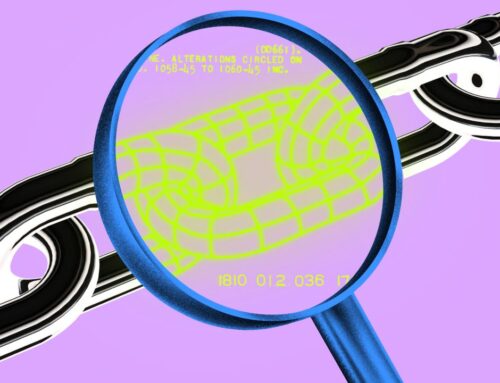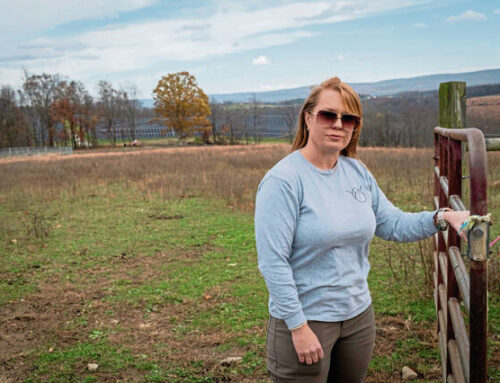Investing in the Next Wave of Ocean Research
June 23, 2025
In one of the world’s most urbanized coastal environments—the waters around Hong Kong—pressure from human activities is threatening the vulnerable Indo-Pacific humpback dolphin, known locally as the Chinese white dolphin.
“Evidence shows—clearly and unequivocally—that Chinese white dolphins are hanging on by a thread, clinging on to their last remaining habitat refuge in Hong Kong,” says Stephen C.Y. Chan of the Cetacea Research Institute, who calls the dolphins “important sentinels of coastal ecosystems.”
“Just as canaries in the mines alert coal miners of the presence of dangerous gas, a rigorous understanding of the well-being of these animals serves as indicators” of the impacts of a changing environment, Chan says.
“Most of the big reef-building corals in the world have stopped having babies,” says Kristen Marhaver, a marine biologist with the CARMABI Marine Research Station in Curaçao in the Dutch Caribbean, where she grows corals in a lab. “Imagine if no human had successfully had a baby in the last 30 years—we would be so scared for the future of our communities, cultures, and entire species. But corals can have babies when humans lend a hand.”
With research from her fellowships, Marhaver wants scientists throughout the world to grow more corals—foundations for biodiversity in so many marine ecosystems—and faster.
She’s learning what corals need in nature to become parents on their own and knows from working with the most fragile corals that fertilization often fails. But she also knows about a whole array of innovations that could help coral eggs fertilize and grow into baby corals, which will go on to provide shelter, nurseries, and feeding grounds for untold marine species.
Further north, a 2019 fellow also made a breakthrough with how she approached the study of sharks, as well as the closely related rays.
Rima Jabado, lead scientist from the Gulf Elasmo Project in the United Arab Emirates, used her fellowship to study guitarfishes and wedgefishes, sharklike species of rays, in Mauritania, Senegal, India, and Sri Lanka, countries where the fish were under pressure from commercial fisheries. Support from the fellowship allowed her to learn more about the major threats to these understudied and often misunderstood species that seldom receive attention. “There’s so many population declines over the years,” Jabado says of sharks and rays, “but we don’t talk a lot about that because we see them more as a fisheries commodity, something we can eat on our plate, rather than wildlife.”
Kerry Sink (left), a 2016 marine fellow, points to images from a remotely operated vehicle used to explore a submarine canyon off South Africa, where she helped define critical areas of ocean biodiversity. Years later, Sink and a former member of the program’s selection committee teamed up to study an ancient and endangered fish species—the coelacanth (right), such as this preserved specimen.
Left: The Pew Charitable Trusts, Right: José María Barres Manuel/Alamy
More recently, following a chat at breakfast at the program’s 2022 annual meeting in California, 2016 fellow Kerry Sink, a professor at the South African National Biodiversity Institute, teamed up with Stefano Mariani, a former member of the program’s selection committee, to study coelacanths, an ancient and critically endangered fish that lives in deep, tropical marine caves. The team recently published a study that demonstrated using environmental DNA as a noninvasive tool to monitor the iconic species.
Cross pollination of expertise is a big draw for Mangubhai. “You need those diverse perspectives, people working in different fields, to try and find solutions to some of our pressing environmental issues,” she says. “I might be working in a session and sitting next to someone who’s an expert on penguins or polar bears or Arctic treaties, and they have different viewpoints to bring that might be applicable in my country in the tropics in the Pacific.”
“We get to meet at least once in a year at this meeting, and that’s huge!” says 2008 fellow Rashid Sumaila, an economist specializing in oceans and fisheries at the University of British Columbia, Canada. “Otherwise, we’re all too busy in our own corners. But you get these days here, away from home, together with colleagues you respect, share great ideas, and you can even create new projects.”
As it has for more than three decades, the Pew marine fellows program will continue to support those connections among the scholars whose work is crucial to conserving delicate marine species and habitats that underpin essential resources and food for billions of people—expanding exponentially the potential for bringing about positive change to secure the world’s waters.
Carol Kaufmann is a Trust staff writer.
Explore the Issue
This article is part of a magazine issue featuring in-depth stories and insights.
Search
RECENT PRESS RELEASES
Related Post




